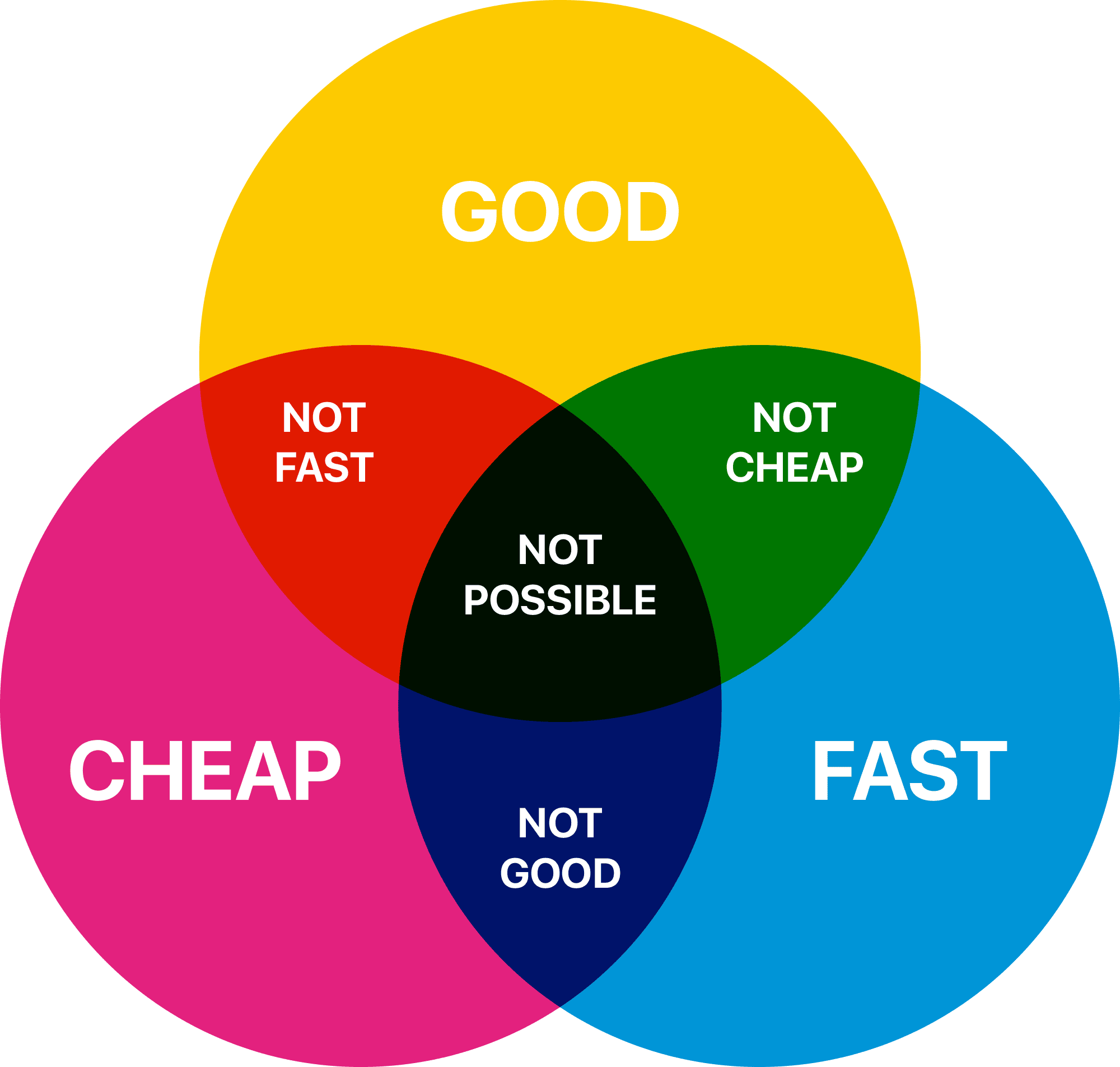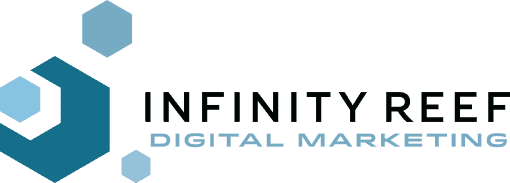It used to be auto mechanics. How did you know that the guy telling you it was going to be at least $800 to fix your car was one, telling you the truth, and two, knew what the hell he was doing. If you knew something about car repairs, great, you were an informed customer and could make an informed decision. Or if you had a guy that you’d been going to for years and you’d built up trust and respect, that worked too.
Buying graphic design today can feel just like that. Like a garage, they seem to be on every corner and all of them promise quick, professional service. Some are as lively as accountants. Some can never stop smiling.
So how do you tell which one is right for you?
Do you like their work? Is it by how many awards have they won? How much they want to bill you? How cool are their offices? Do they even have offices? Are they snappy dressers? Can they work the room at a networking mixer? Do they pick up the phone whenever you call?
Everyone has different criteria for what they feel comfortable with, and buying design is no different than any other professional service. Yes, how you feel about the service and the people providing it is important, but it’s even more important to get what your business needs to connect with potential customers. That, in the end, is the best way to assess design: Is it doing its job as an effective business communication instead of merely being visually interesting and modern?
Where Do Designers Come From?
It is an understatement to say that computers – beginning with desktop publishing back in the 1980s – democratized the world of graphic design by reducing the barrier to entry to the cost of a desktop computer and how much time a person put into learning the software.
Before that, design required years of training and practice; in drawing, typography, colour theory, copywriting and more. All leading to full design abilities. That training has never gone away. True, they no longer teach you how to do paste-up or get a good piece of film off a line camera – that has been supplanted by digital methods (thankfully) – but the theory and depth of design knowledge is the work of a lifetime. For the potential designer, the four-year bachelor’s degree from an established school is the best commitment they can make.
But Not All Designers are Created Equal
As computers integrated with our lives and grew in prominence, so did creator culture. Suddenly, everyone wanted to make something and had access to the tools.
Post-secondary schools, public and private, large and small, were quick to pick up on this and expanded course offerings to include graphic design in one form or another. Courses can be as short as a few weeks to learn Photoshop basics, or one or two years or more giving you a diploma. Depending on the school, its instructors and the student’s own ability to be a self-starter, the student can come away with skills to make them marketable.
In recent years, the design world has seen further pressures put upon it by sites that frame the work to be done as something simple and cheap to accomplish. Pay only what you want to for your company’s logo, and you get as many revisions as you require. Add to that the offshore industry for design where the economics are much different than what we experience here, and you can see why some individuals or companies choose to go that route. In our experience, we see a lot of admin time being sucked up by disconnected processes. Yes, your up-front cost may be lower, but the cost of doing business is almost always higher. Rework isn’t cheap. We’ve all heard variations to the “Good Cheap Fast – choose two” stories. They are a part of almost every service-oriented industry.

Design is still one of those professions where, regardless of start, it matters what you do as your career progresses. Building a body of work that does what it’s supposed to do is, in the end, the only measure of design that matters. With those successes, the proven decision-making abilities of the designer leads to a progression in project complexity and greater responsibility.
What Should You Be Looking For?
Let’s get the money out of the way first
Some clients look only at the cost of the service and lowball it every time. Or similarly, not understand that they need to pay for the designer’s experience to generate the desired results in the marketplace. A lowball, if the designer takes it, can lead to them to only give you what you’re paying them for. Just because you don’t know the value of what you’re asking for doesn’t mean the designer doesn’t know their own value. And that’s become even clearer in today’s inflationary environment.
“Yeah, we don’t need to pay them that kind of money to do our web site. My brother’s kid knows all about this stuff. You should see his set up in his basement. I’ll flip him a few bucks.”
Thankfully, as the saying goes, you don’t need to break the bank, but you do need to spend enough. Lowballing leads to throwing good money after bad as you try to get results the initial amount had no way of generating. So, shop around and find out what the going rates are if you’re not used to buying design. Pay a fair rate for what you can budget to buy and build on that over time.
Working with a Designer
You should look at a designer as any other professional out there. A plumber. A lawyer. An insurance agent.
Take that plumber. They’re going to tell you up front what their rate is. Parts are separate. If it’s a larger job, they’ll want a deposit and milestone payments as they work to completion and final payment. You are going to tell them what kind of sink, fixtures and so on you want in specified rooms. You won’t tell them how to lay pipe, weld joins or hook up the toilet. And if you change your mind partway through the build moving the kitchen from the southeast corner to the west side of the house, they’re going to requote and charge you extra for the rework. Thank you. Sign here.
Good design clients take a similar approach, though there is generally more collaboration. The client has a goal in mind: a new identity, a new message, a new product or service, and we’re there to help them communicate that to their existing and potential customers.
Depending on the client’s own knowledge of design, branding and marketing, we know whether to be leaders, to be colleagues, or to extend their already-developed capabilities. For most of our clients it’s been either one or two.
Let’s take another parallel from the plumber. The part where you don’t say much about welding and other bits of the nitty gritty details of what a plumber does. Design has that too because we’ve spent decades eating, breathing, sleeping, and waking up in the middle of the night with an idea that won’t let us rest, design. Ours. Our competition’s. The superstars in the profession. The hopelessly amateurish. The endless trends.
There is a segment of the market that says anybody can do this stuff, and it’s backed by software advertised as being able to do all the hard stuff for you. And in that, the democratization of design is a lie. Take Wix, the amazingly easy web builder and hosting supplier that’s cheap and fun. Look at their commercials a little more closely. They take already-made content and drop it into boxes. Click, click, click. And you’re done!
But what about the hours that went into creating that content? Who came up with the communication direction? Who wrote the content? Who shot the photos or made the illustrations? Sure, Wix is cheap, but creating the content cost thousands because that’s what it costs.
“I know you’ve given us a rationale for why you’ve made your choices here, but I’m going to run it past my wife. She has a real eye for colour.”
Another example. Fiverr says you guide a designer to create, let’s say, your new logo. The designer’s skill aside, the weakest link in that process is you. You know your business. You don’t design logos for a living. You couldn’t get hired by an agency to be a designer. People hire you for what your business is about. It’s no different for designers. We don’t get hired to do what you do.
A good designer will always listen to find the gems of information a client provides, that insight into what they do better than anyone else. We turn that into compelling messages we believe will resonate in the marketplace. That’s why you hire us. And that’s why a good client also listens. We each know what we’re doing. If you have that relationship with your design agency, that’s worth far more than the money you’re paying because you’re in a position to deliver honest value to the market.
Infinity Reef is a small, nimble agency that outperforms for its size and responds well to client engagement and collaboration. Give us a call and we’ll be happy to have an unhurried, in-depth conversation with you.
